The 1st AIAA Aeroelastic prediction workshop (AePW-1) was held in April 2012 and was sponsored by the AIAA Structural Dynamics Technical Committee. The main objective of the workshop was to assess wether state-of-the-art Computational Aeroelasticity (CAe) methods can server as practical tools for the prediction of static and dynamic aeroelastic phenomena and responses on relevant geometries. For more info on the workshop please visit http://c3.nasa.gov/dashlink/static/media/other/AEPW.htm.
The Israeli CFD Center and Professor Daniela Raveh from the Technion IIT, have participated in workshop. One of the benchmark test cases investigated in the workshop was the High Reynolds Number Aero Structural Dynamics (HIRENASD) wing,
a swept tapered wing with a supercritical wing section. The wing was instrumented and tested in the European Transonic Wind (ETW) tunnel to provide detailed measurements for code validations.
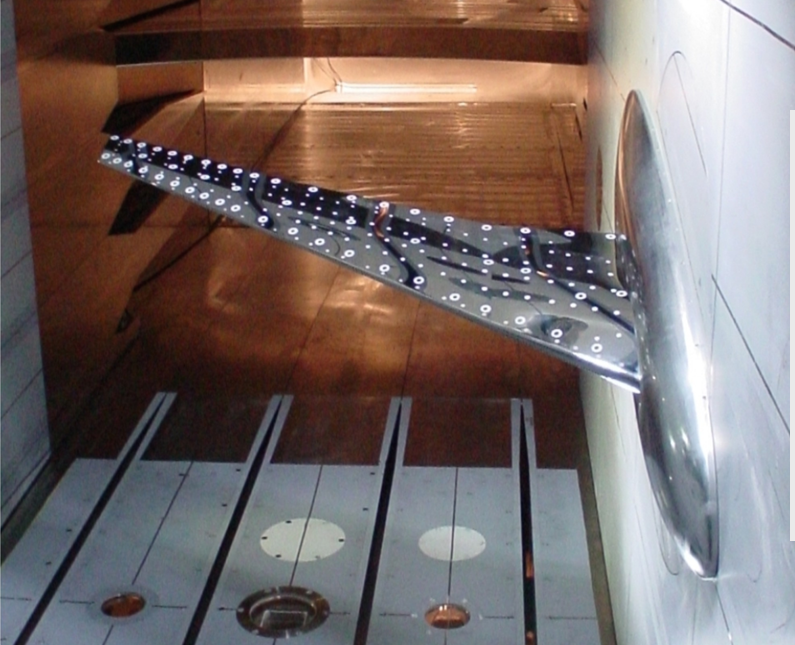
Thanks to the advanced aeroelastic module implemented in EZAir, the process of numerically simulating the aeroelastic case is greatly simplified. After generation of a computational model (grid), an external structural model is uploaded, and a set of input instructions are given. Consequently, the whole process of convergence toward the steady flow about the deformed wing is automatic.
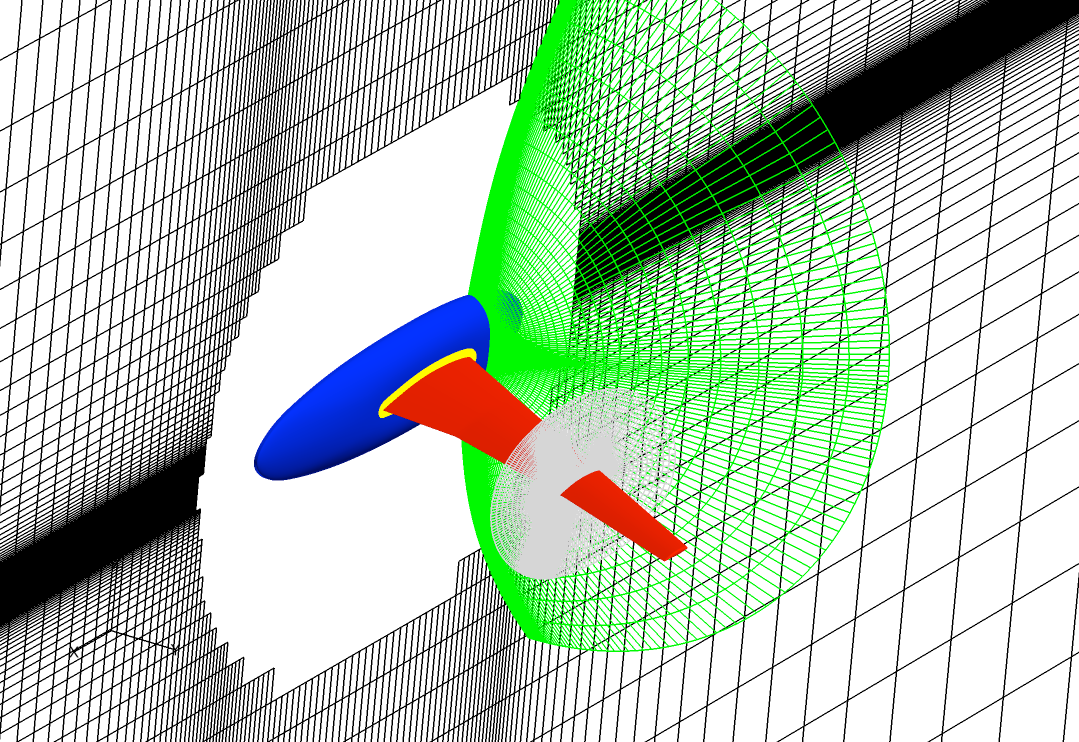
The following figures show a comparison of the surface pressure coefficient at various wing sections for the flow conditions of Mach number 0.8, Reynolds number of 7x106, and an angle of attack of 1.5º. The excellent agreement between the experimentally measured and calculated results demonstrates the code capability to reproduce aeroelastic flows by computational means.
 |
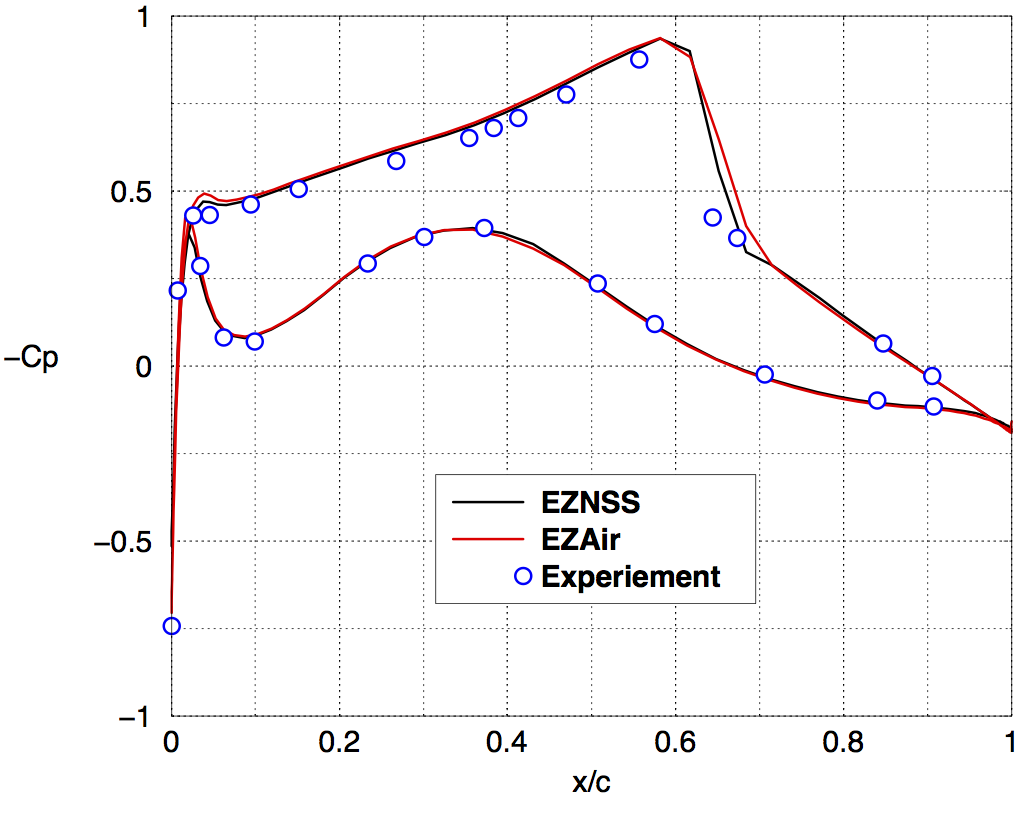 |
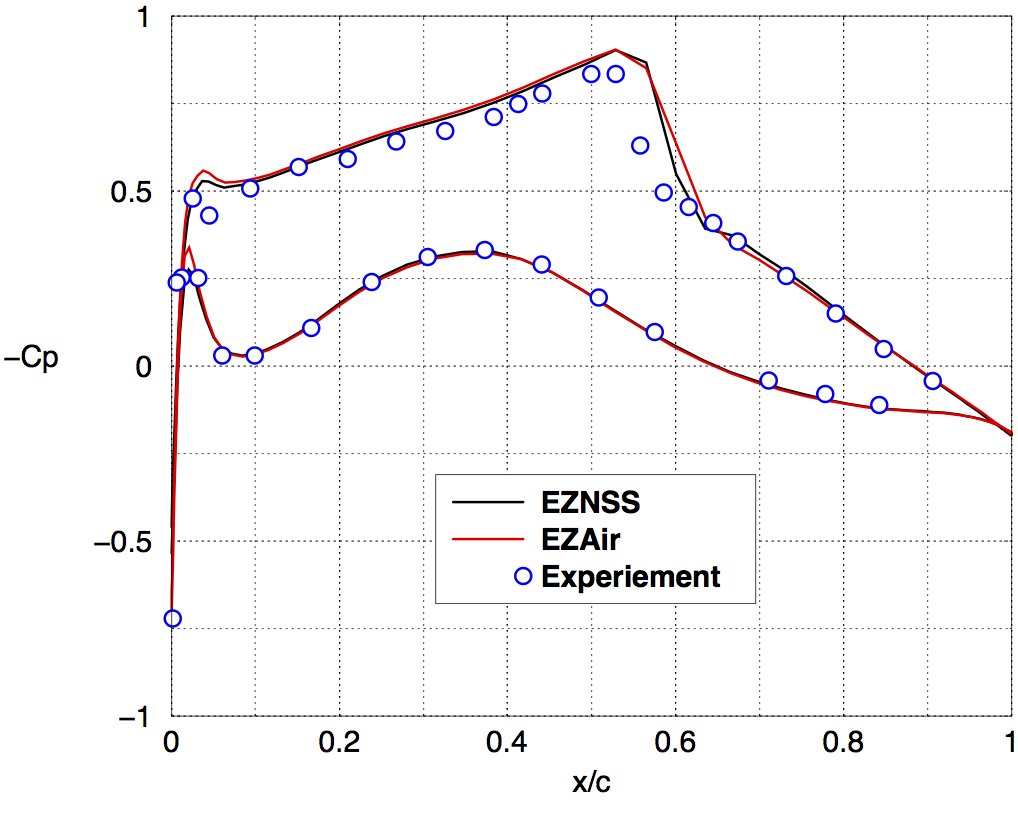 |
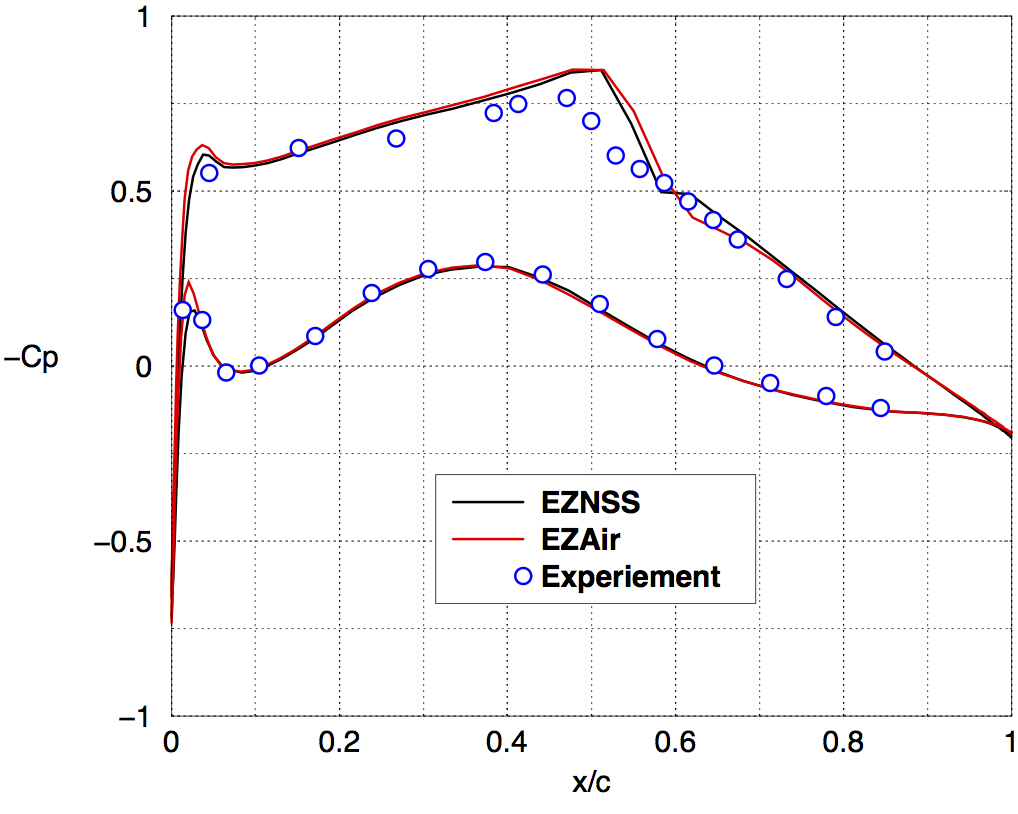 |
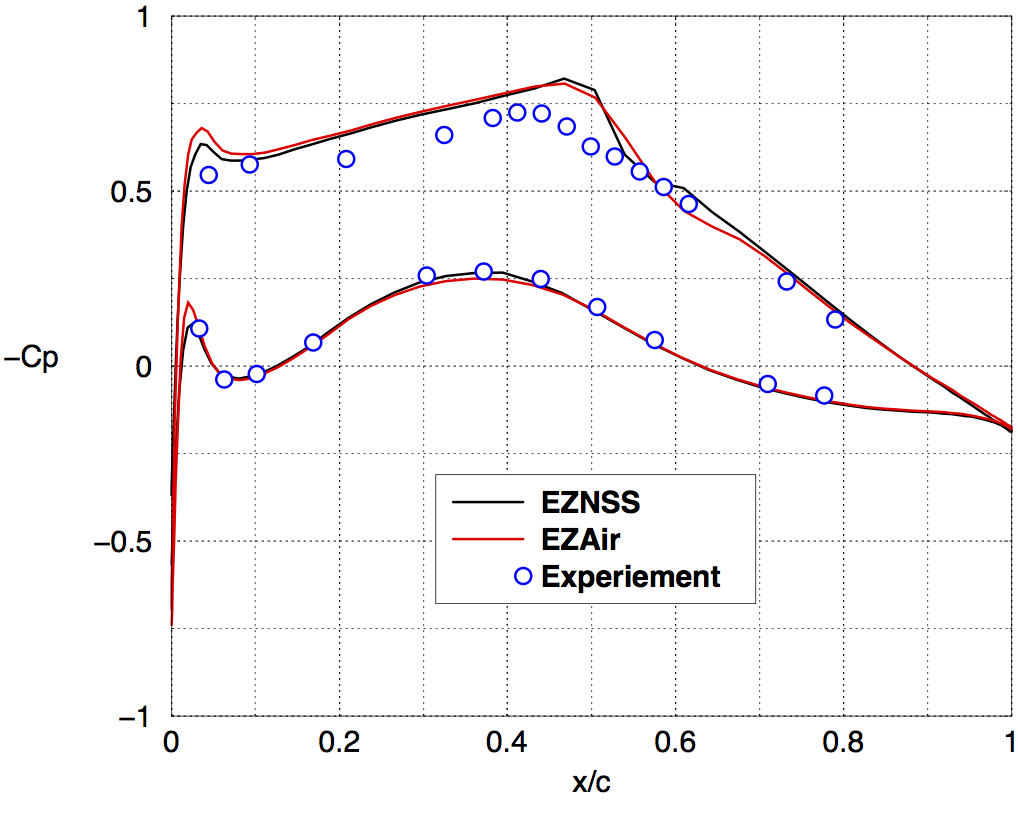 |
|

















